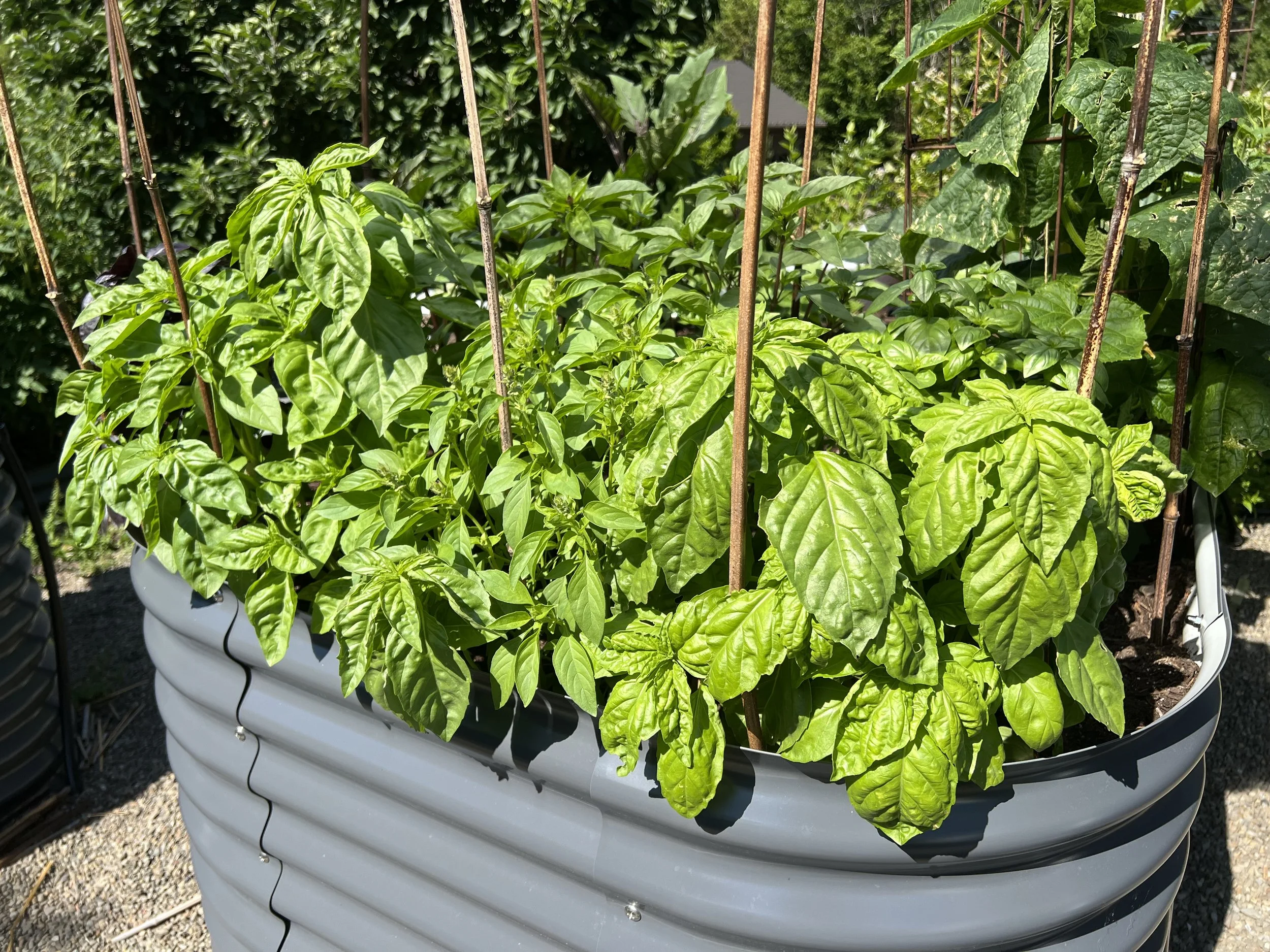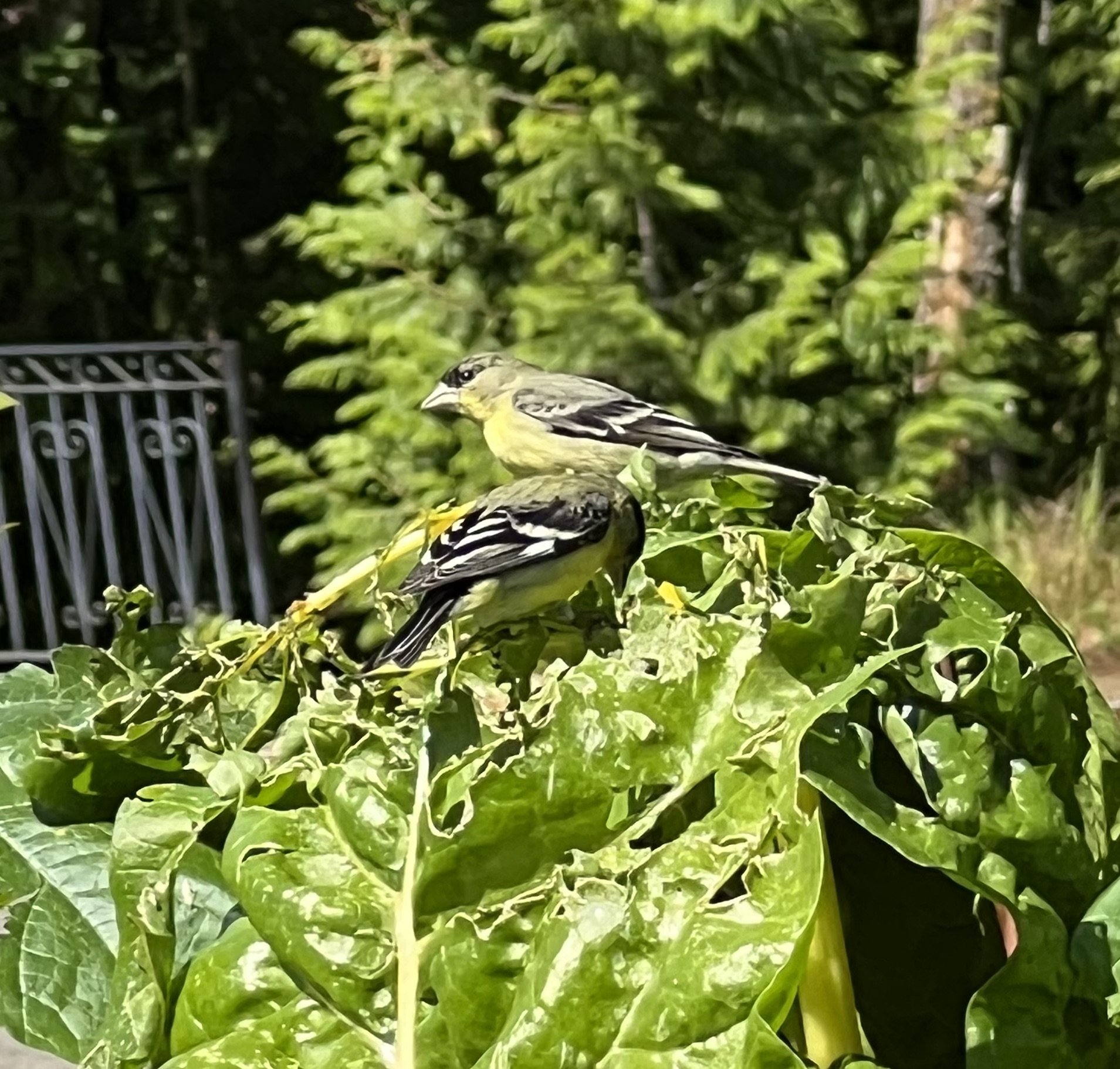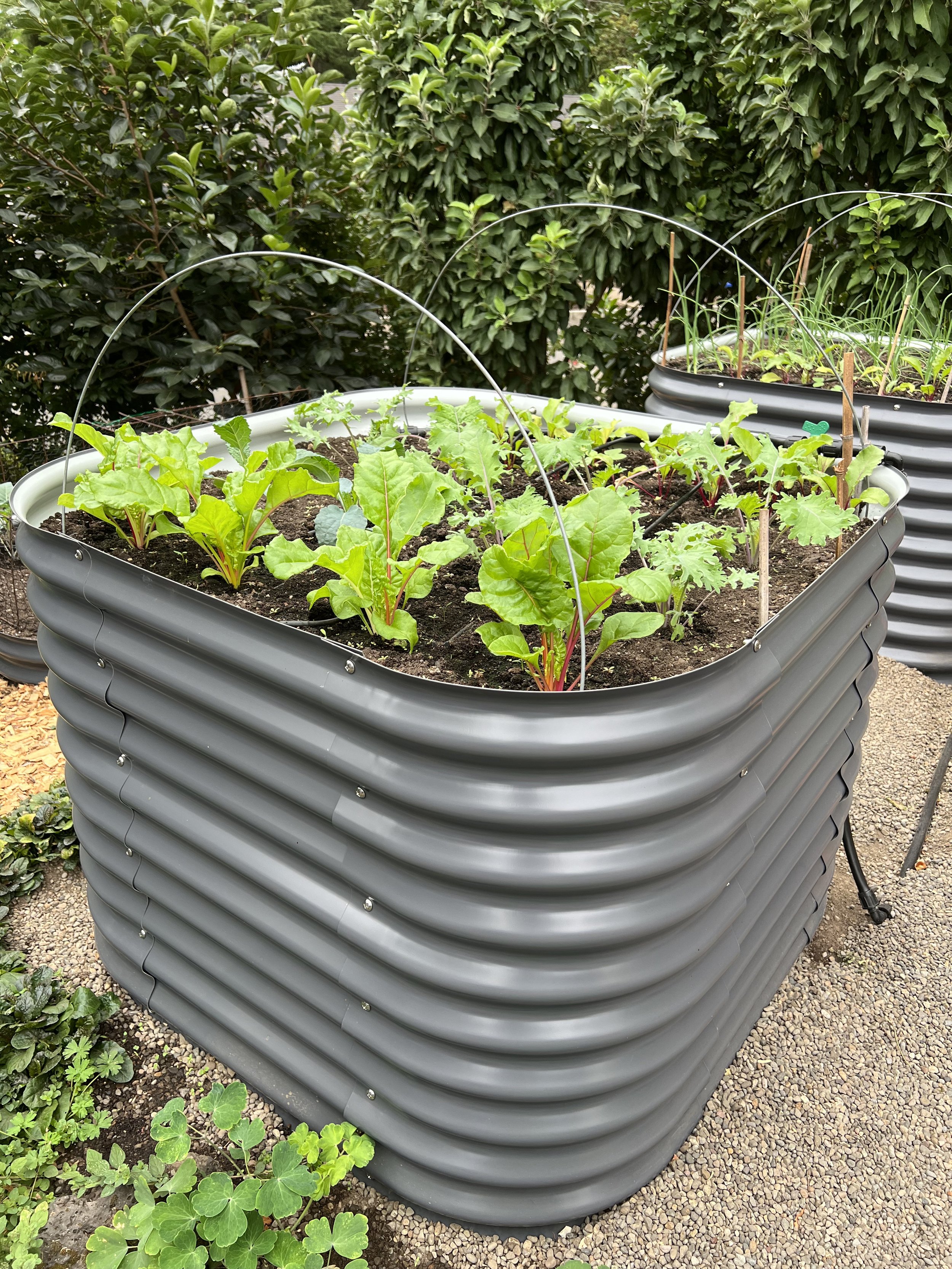How I prep soil in the raised beds
Each spring I top off the beds with bags of steer manure mixture and any used potting soil I want to get rid of from the greenhouse or overwintered pots.
Before planting, I mix in dry organic vegetable fertilizer, any brand (this year I’m starting with Dr. Earth tomato, vegetable and herb fertilizer), blood meal, bone meal, dolomite lime, worm castings, and (perhaps the magical secret ingredient) 20 year old pond muck (fish waste and rotted pond plants and fall leaves) from cleaning out the garden pond a couple of years ago.
I don’t measure anything. I just add a light sprinkling all over.
We have since added a filter system to the pond, so when I run out of 20 year old pond muck, I’ll save the water each time I clean the filter and use that to water the vegetables.
If I think of it during the season, I fertilize the growing plants with some liquid fertilizer, but I’m definitely not consistent with that. Mostly the plants are expected to grow with only the initial dose.
I always add all the ingredients listed above when I’ve cleared a section to put in new plants.
Vego garden metal raised beds
I replaced my rotting wooden 10 inch high raised beds with metal 32 inch high beds in 2022. It took a whole summer’s worth of energy, but I am so pleased with the result.
I tell people the difference in working the new tall beds is like in the kitchen. Would you rather cut up your vegetables on the floor or on the countertop? So much more work gets done now that it is at a more convenient height. So much more attention is given to every plant — the same level of attention they get in the greenhouse they get out in the garden now.
The new raised beds are from vego garden, which is based in Texas.
Another bonus is that now during the growing season I have goldfinches come by for breakfast. They snack on the bugs and larvae, so the last 2 years I’ve had no worms of any type in my cabbages! They did not visit my shorter raised beds. I think they must feel safer in the new tall ones. (The goldfinches do really enjoy munching on the swiss chard also, but I only grow that for the colorful stems and to give to the hens, so I don’t mind.)
A pair of goldfinches snacking on swiss chard in the garden - WILLS FARM.
Rabbits will eat your vegetables!
It is not difficult to protect your crop. You need a fence. It doesn’t need to be a heavy duty fence. The height depends on your garden setup.
My new 32 inch high metal raised beds have thwarted the rabbits. I still have one shorter bed that needs a fence.
For rabbit fencing on my shorter raised beds, I cut sections of concrete reinforcing wire and covered them with black coated chicken wire, attaching it with small wire ties. They are 2 squares high (12 inches) plus the “legs” which are just an extension of the wire. I place those sections around the edge of my shorter raised bed, which amounts to having a fence about 2 feet high. (See the photo below.)
Yes, I know the photo is confusing, because there you see a fence, but the rabbits have eaten the plants behind it. I had removed the fence on one side; those rabbits are always checking on the situation and took advantage! Also, the fence is too short for the situation. That fencing is designed to be used atop a short raised bed.
Even though I know that rabbits can jump higher than 2 feet, I think my fence works because they cannot clearly see the edge of it, so they don’t want to take a chance on the unknown.
For a ground based garden, you would need a fence at least 2 feet high, and may need to flare out the chicken wire at the lower edge (or at least pin down the lower edge of the fence) to prevent digging.
from Fine Gardening:
Keeping Rabbits Out of the Kitchen Garden
Rabbits, be they jackrabbits or cottontails, can devastate your vegetable garden. Here's how to keep rabbits out of your vegetable garden without doing them harm.
from Garden Design:
Rabbits - Natural Ways to Protect Your Garden
Rabbit damage. Yes, there is a fence in the photo, but it was only on one side. - WILLS FARM.
Vego garden 32 inch high metal raised bed - WILLS FARM.
Since installing the 32 inch high vego garden beds, I estimate that my harvest has increased 40 to 80%, depending on the crop.
Why?
Definitely one factor has to be that the convenient height of the beds means that all of the plants get maximum tending and attention.
The goldfinches are now helping with pest patrol.
The extra space of loose soil and other material in the beds (compared to the shorter beds I had before) allows maximum root space therefore the plants can gather optimal amounts of moisture and nutrients.
Three fourths of depth of the beds is filled with various yard debris, from medium sized log sections to bamboo leaves, a modified hugelkultur.





